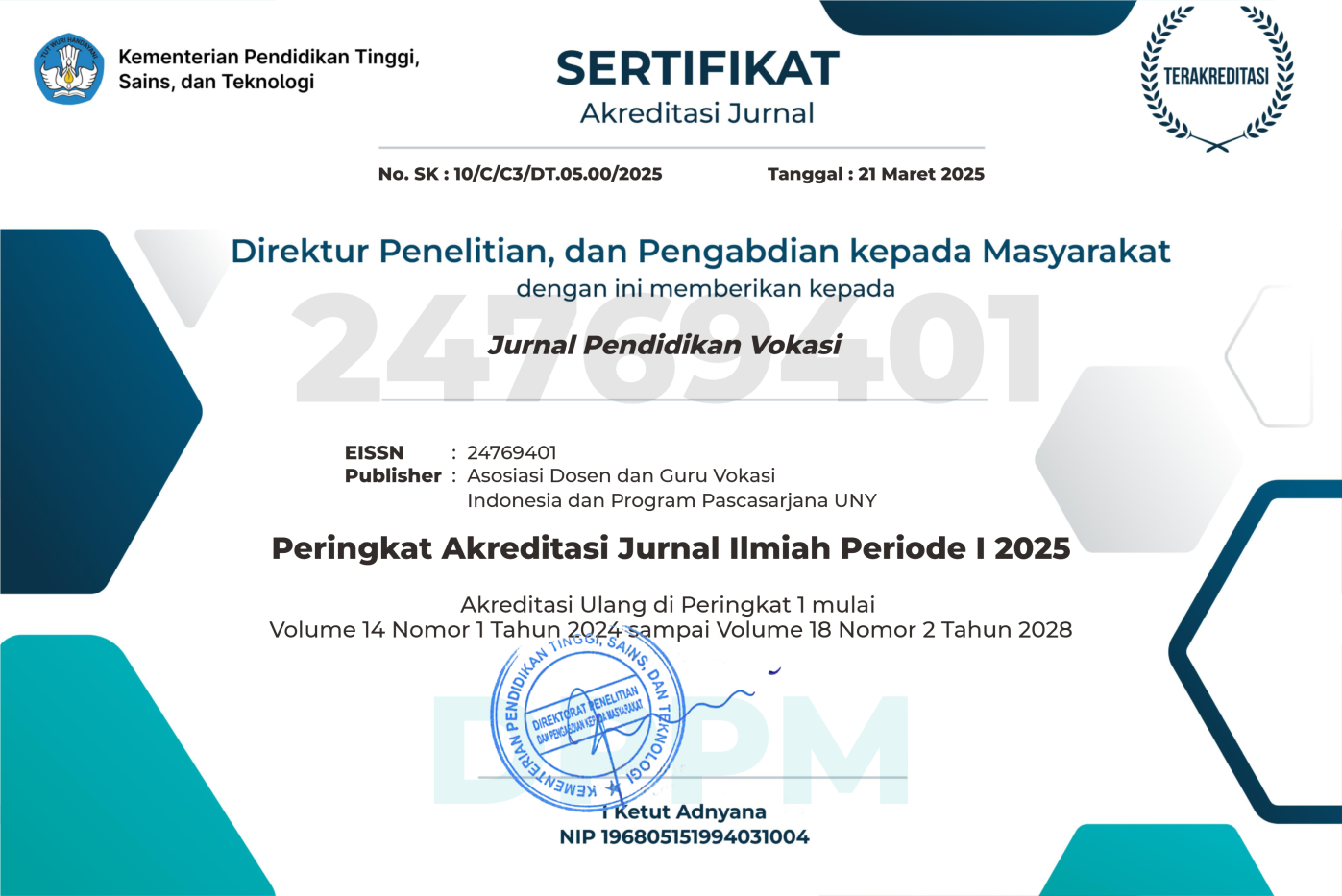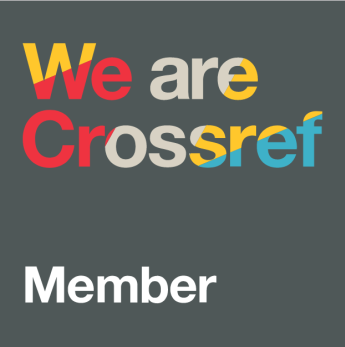Development of Youtube integrated google classroom based e-learning media for the light-weight vehicle engineering vocational high school
DOI:
https://doi.org/10.21831/jpv.v8i1.17356Keywords:
the 2013 curriculum, learning media, e-learning, google classroom, youtubeAbstract
The purpose of this research is to produce the e-learning media for the Light-Weight Vehicle Chassis and Powertrain Maintenance Subject. The type of this research is the research and development. The procedure applied in this research is the ADDIE model. Construct testing by the expert is done by curriculum expert, practitioner and teaching media expert. Construct testing and content testing were also conducted to 23 students as the user. Qualitative data were analyzed using an iterative step that is reading/memoing, describing, and classifying. Quantitative data were analyzed with descriptive statistics. The research result shows that YouTube Integrated Google Classroom Based E-Learning Media has been produced and tested for Light-Weight Vehicle Chassis and Powertrain Maintenance subjects. The construct testing shows that this e-learning media is decent based on an expert's judgment, and based on the user response shows that the reliability of the construct is good. The content testing shows that students who use the YouTube Integrated Google Classroom Based E-Learning Media have significantly greater learning outcomes compared with students who use the internet to access the website without control.
References
Arnanto, G. C., & Triyono, M. B. (2014). Keefektifan pembelajaran berbantuan internet di SMK se-kota Yogyakarta kompetensi keahlian teknik komputer dan jaringan. Jurnal Pendidikan Vokasi, 4(3). Retrieved from https://journal.uny.ac.id/index.php/jpv/article/view/2557
Ghirardini, B. (2011). E-learning methodologies, a guide for designing and developing e-learning courses. Rome: FAO.
Kriscautzky, M., & Ferreiro, E. (2014). La confiabilidad de la información en Internet: criterios declarados y utilizados por jóvenes estudiantes mexicanos. Educaí§í£o E Pesquisa, 40(4), 913–934. https://doi.org/10.1590/s1517-97022014121511
Laugwitz, B., Held, T., & Schrepp, M. (2008). Construction and evaluation of a user experience questionnaire. Springer- Verlag Berlin Heidelberg, 5298, 63–76. Retrieved from http://www.ueq- online.org/wp-content/uploads/Construction_of_UEQ1. pdf
Lee, D., & Lehto, M. (2013). User acceptance of YouTube for procedural learning: An extension of the technology acceptance model. Computers & Education, 61(2), 193–208.
Menteri Pendidikan dan Kebudayaan Republik Indonesia. Peraturan Menteri Pendidikan Pendidikan dan Kebudayaan Republik Indonesia Nomor 70 Tahun 2013 tentang Kerangka Dasar dan Struktur Kurikulum Sekolah Menengah Kejuruan/Madrasah Aliyah Kejuruan (2013).
Nichols, M. (2008). E-Learning in context. Auckland: Laidlaw College.
Sahin, Y. G., Balta, S., & Ercan, T. (2010). The use of internet resources by university students during their course projects elicitation: a case study. TOJET: The Turkish Online Journal of Educational Technology, 9(2), 234–244. Retrieved from http://www.tojet.net/articles/v9i2/9224.p df
Schrepp, M. (2015). User experience questionnaire handbook, All you need to know to apply the UEQ successfully in your projects. Retrieved from www.ueq- online.org
Snyder, S. L., & Burke, S. C. (2008). Students' perceptions of YouTube usage in the college classroom. International Journal of Instructional Technology & Distance Learning, 5(11). Retrieved from http://www.itdl.org/Journal/Nov_08/artic le02.htm
Downloads
Published
How to Cite
Issue
Section
Citation Check
License
The authors submitting a manuscript to this journal agree that, if accepted for publication, copyright publishing of the submission shall be assigned to Jurnal Pendidikan Vokasi. However, even though the journal asks for a copyright transfer, the authors retain (or are granted back) significant scholarly rights.
The copyright transfer agreement form can be downloaded here: [JPV Copyright Transfer Agreement Form]
The copyright form should be signed originally and sent to the Editorial Office through email to jpvokasi@uny.ac.id
Jurnal Pendidikan Vokasi by http://journal.uny.ac.id/index.php/jpv is licensed under a Creative Commons Attribution-ShareAlike 4.0 International License.












